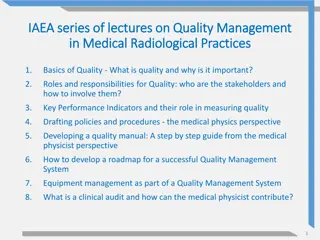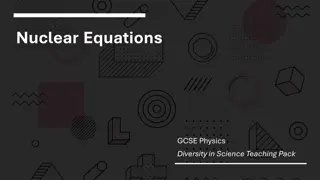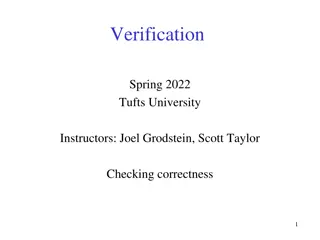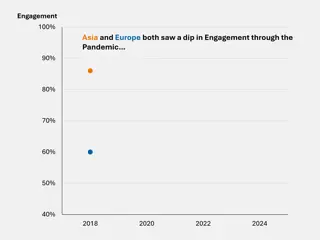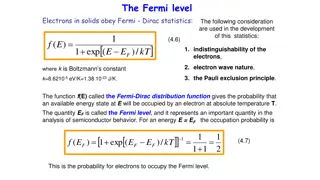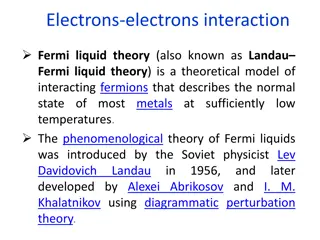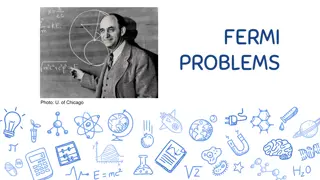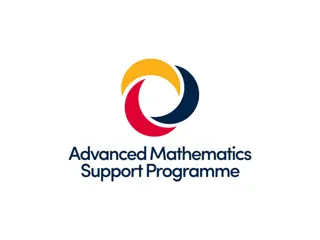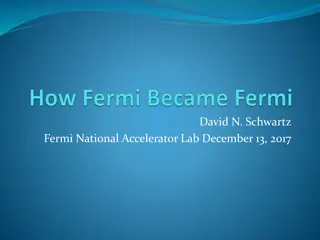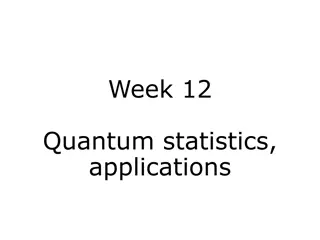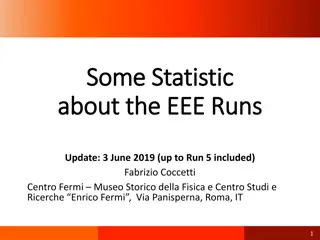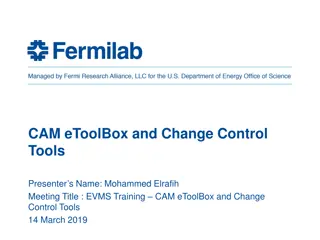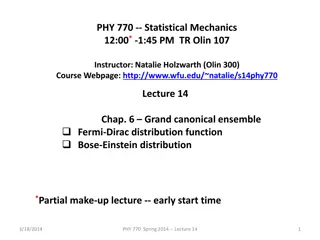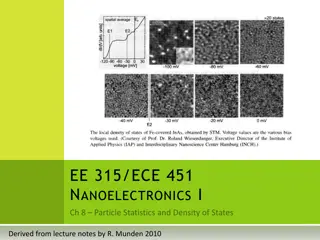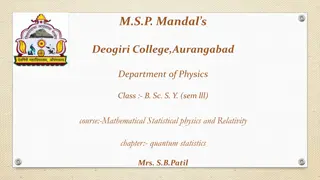Enrico Fermi's Lectures in South America: 1934 Overview
In 1934, Enrico Fermi embarked on a lecture tour in Argentina, Brazil, and Uruguay, delivering insightful talks on nuclear physics. Despite language barriers, his lectures attracted large audiences and covered groundbreaking topics such as beta decay theory and neutron-induced artificial radioactivity. This trip marked a significant period in Fermi's career, leading to future Nobel recognition.
Download Presentation

Please find below an Image/Link to download the presentation.
The content on the website is provided AS IS for your information and personal use only. It may not be sold, licensed, or shared on other websites without obtaining consent from the author.If you encounter any issues during the download, it is possible that the publisher has removed the file from their server.
You are allowed to download the files provided on this website for personal or commercial use, subject to the condition that they are used lawfully. All files are the property of their respective owners.
The content on the website is provided AS IS for your information and personal use only. It may not be sold, licensed, or shared on other websites without obtaining consent from the author.
E N D
Presentation Transcript
Enrico Fermi in Argentina e le sue lezioni a Buenos Aires, Cordoba e La Plata Alessandro De Angelis Universit , INFN e INAF Padova Congresso Nazionale SIF Settembre 2020 e Jose M. Kenny Ambasciata d Italia a Buenos Aires e Universit di Perugia Quaderni di Storia della Fisica 33, 2020
Riassunto Nel 1934 Enrico Fermi accetta l invito a tenere (cicli di) conferenze in Argentina, Brasile e Uruguay. Arrivato il 30 luglio a Buenos Aires, parla nella Capitale Federale, a Cordoba, La Plata e Montevideo, e poi si sposta il 18 agosto in Brasile; riparte da Rio de Janeiro per Napoli il 1 settembre. La sua visita ha grande risonanza e le aule sono affollate nonostante le lezioni siano tenute in italiano. A differenza delle lezioni tenute in Brasile e in Uruguay, quelle in Argentina vengono trascritte (in spagnolo). Contengono le prime presentazioni pubbliche della teoria del decadimento e dei lavori sulla radioattivit artificiale del gruppo via Panisperna, ma non sono incluse fra i Collected Works di Fermi a cura dell'Accademia dei Lincei e della Chicago University, sebbene quelle a Buenos Aires siano elencate nella bibliografia.
Enrico Fermi and Laura travel to South America Year 1934 was the annus mirabilis for Fermi, with many great discoveries, in particular the theory of beta decay (the result had been indeed made public in 1933, but the complete publication came in 1934), which paved the way to the theory of EW interactions and to the Standard Model of particle physics, neutron-induced artificial radioactivity, that will lead him to the Nobel prize in 1938 In the same year Fermi accepted an invitation to deliver lectures in Argentina, Brazil, and Uruguay He reached Buenos Aires on Monday, July 30 1934 onboard the Neptunia boat, after boarding probably in Naples
Fermis 5 Lectures in Buenos Aires Fermi gave 5 lectures in Buenos Aires, starting on Thursday, August 2 1. Characteristics distinguishing atomic physics from the physics of ordinary bodies 2. The concept of measurement and its criticism 3. The fundamental elements of nuclear structure (part 1) 4. The fundamental elements of nuclear structure (part 2) 5. The artificial disintegration of the nucleus
Fermis Lectures in Buenos Aires: 1 & 2 Characteristics distinguishing atomic physics from the physics of ordinary bodies The concept of measurement and its criticism Truly didactical introduction.
Fermis Lectures in Buenos Aires: 3 & 4 The fundamental elements of nuclear structure Some more recent results: Antimatter (1932). Anderson; Occhialini & Powell. Dirac s theory and interpretation (holes). Potential theory, potential gap in nuclear reactions. Tunnel effect. Why lighter nuclei can penetrate more effectively atoms. Basics of decay.
Fermis Lectures in Buenos Aires: 5 The artificial disintegration of the nucleus Description of the experiments carried out in Roma Be bombarded by particles emits neutrons Used to activate several substances Radioactivity ( or ) detected by a Geiger counter Maybe a trans-uranic element has been generated?
Fermis Lecture in Cordoba: Experiments on Artificial Radioactivity (Aug 11) Along the line of the last lecture in Buenos Aires, with more details On decay On activation of transitions by neutrons An element which did not fit the scheme had been possibly produced in the bombardment of Uranium Was it the element 93, Neptunium?
Fermis Lecture in La Plata: Radiation (Aug 17) Only short summary available The most didactical Several kinds of radiation compared Cosmic radiation and the main hypotheses that have been proposed to explain it. It is a radiation that, although of very weak intensity, thanks to the enormous energy of the corpuscles that constitute it can sometimes produce disintegration phenomena of much greater magnitude than can be obtained in the laboratory AdA & JM Kenny, Quaderni di Storia della Fisica 33, 2020


